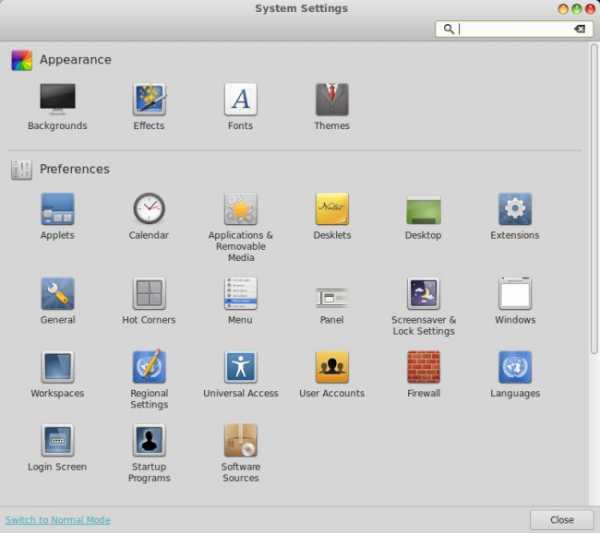

Instead, you will have to browse/scroll down and choose to install GStreamer if you like.
#Xfce desklets software#
While this package can easily be installed using a simple command, you won’t find it listed in the Ubuntu Software Center. Ubuntu has a package named Ubuntu Restricted Extras that consists of the most commonly used media codecs, including Adobe Flash. But if you don’t do it while installing it, you will find yourself struggling. Ubuntu too gives the option to install codecs while installing OS itself. It’s not that you cannot install media codecs on Ubuntu. Codecs, Flash, and plenty of applications by default So, for users who want out-of-the-box customizability and the support for applets/desklets with the ease of managing them, Linux Mint will be a perfect choice.
#Xfce desklets windows#
You can also access an online collection of indicator applets and desklets ( Windows like desktop widgets in Linux). Similarly, Linux Mint also has a separate entry in Settings for applets and desklets. Sure, you can select accent colors with Ubuntu 22.04 LTS, but that may not be enough.
#Xfce desklets download#
You’ll have to look for places to download the zipped themes file and install it. Ubuntu, on the other hand, does not have this ease in installing the themes. Moreover, you can have several themes from the community at your disposal in Themes System Settings under the ‘Get more online’ option. It already lets you tweak it from the System Settings. Personally, I haven’t noticed it slow down, it is always snappy whenever you need it.įirst, you don’t need to install a new tool (like GNOME Tweak) just to change themes in Mint. On the other hand, Linux Mint’s Software Manager is lighter and quicker. Of course, things have improved over the years, but even with Ubuntu 22.04, on board, you will often notice it loading up slow or freezing when updating/installing an app. Ubuntu Software Center takes ages to load, heavily eats up resources, and is slow while interacting with it. Software Manager: faster, sleeker, lighter Linux Mint Software Manager Of course, you can install Cinnamon on Ubuntu, but we are discussing the default desktop environments here. But if you have a core i3 processor with 4 GB of RAM (or lower), the Cinnamon desktop gets the win technically. Of course, if you have a core i7 with 16 GB of RAM, this won’t matter. This makes it an ideal choice for computers with older configurations. But, out of the box, without any modifications, Linux Mint seems to be light on resources. It is worth noting that the memory consumption depends on what applications you’re running and if they’re resource-friendly. Low memory usage in Cinnamon than GNOMEĮven though the difference isn’t huge, Linux Mint tends to get an edge with a lower memory consumption over Ubuntu. If you are not aware of various editions, you can read this article to understand what is a desktop environment. A few parameters might not be applicable to other versions with different desktop environments. Note that the comparison is mainly between Ubuntu GNOME vs. How come? I am going to list eight things that Linux Mint does better than Ubuntu. Similarly, Linux Mint makes Ubuntu better. Hardcore Debian users would disagree, but Ubuntu makes Debian better (or should I say easier?). The question is: Why use an Ubuntu derivative or a Debian derivative instead of using the source itself? The answer to the question is that the derivative is better. Ubuntu and Linux Mint are unarguably the most popular desktop Linux distributions. While Ubuntu is based on Debian, Linux Mint is based on Ubuntu. 8 things that make Linux Mint better than Ubuntu for beginners But it should still be a good read for an experienced user. The comparison which I am doing here is from the point of view of a beginner Linux desktop user who probably has just switched from Windows or thinking to switch to Linux. It’s the beginners who struggle with even a seemingly obvious thing.Ĭonsidering that I have used both of these popular Linux distributions, I am confident that I can make a fair comparison of Linux Mint and Ubuntu. Because an experienced Linux user will find their way. And ‘by default’ matters when we are talking about a Linux beginner. It’s because there are a few things that Linux Mint handles better than Ubuntu, by default. I must say, using Linux Mint is quite a pleasant experience.Īs a die-hard Ubuntu fan, I come back from Mint to Ubuntu in time, but not before noticing that Linux Mint is better than Ubuntu for a beginner (and some users). Furthermore, I occasionally try my hands on Linux Mint, mostly to write articles about it. I stray to other Linux distributions, but I keep coming back to Ubuntu, eventually. I have been an Ubuntu user for a long time. This question has been there ever since Linux Mint came into the picture, and this article does not answer this question. Which one is better, Linux Mint or Ubuntu?


 0 kommentar(er)
0 kommentar(er)
